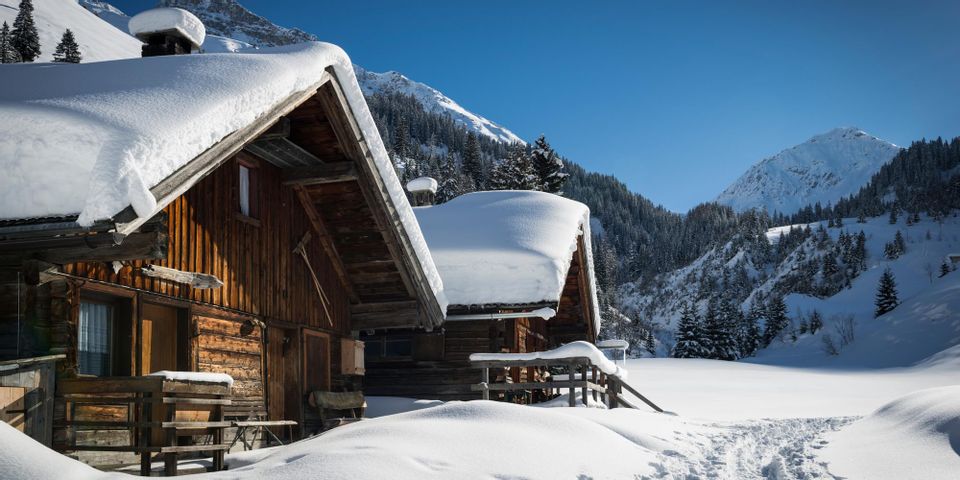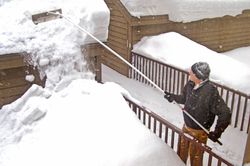Your Guide to Winter Roof Damages & Prevention

Snow and ice have a way of wreaking havoc on your roof during the winter season. From freeze-thaw conditions to severe weather events, you may notice leaks, shingle damage, and other potentially costly issues. The guide below explains potential situations to watch out for and how to be ready in case they occur.
How Does Snow Affect Your Roof?
Ice Dams
Inadequate insulation is one of the leading causes of ice dams. When heat from within your home rises, the snow on your roof will melt and refreeze as it trickles down to the gutter system. Ice dams add extra weight, which may result in cracked shingles, punctures, and even collapse. They tend to block gutters and downspouts, which prevents them from redirecting water away from your roof, resulting in bigger build-ups and leaks.
Heavy Storms
Inclement winter weather makes the roof more vulnerable to shingle issues. As snow collects, it puts stress on the materials, causing them to warp and break. Snow may melt into these damaged areas and allow water to infiltrate your home, resulting in indoor flooding and property damage, including possible mold growth. Hailstorms are also common during the winter and may cause shingles to crack upon impact.
How Should You Prepare?
 In advance of the cold months, make an appointment with a local contractor for an inspection. They’ll add insulation, clear out the gutters, and perform any necessary repairs. Additionally, consider purchasing a roof rake to remove snow from the surface before it turns into ice dams.
In advance of the cold months, make an appointment with a local contractor for an inspection. They’ll add insulation, clear out the gutters, and perform any necessary repairs. Additionally, consider purchasing a roof rake to remove snow from the surface before it turns into ice dams.
Thompson & Thompson 3rd Generation Roofing specializes in residential and commercial roofing to keep your property warm, dry, and protected throughout the changing seasons. They also provide siding, gutters, and insulation to clients throughout Omaha and Bellevue, NE. Visit them online to learn more about brands, warranties, and view their gallery of past work. Then call them at (402) 296-6051 to request an estimate on a new roof or repairs.
About the Business
Have a question? Ask the experts!
Send your question

